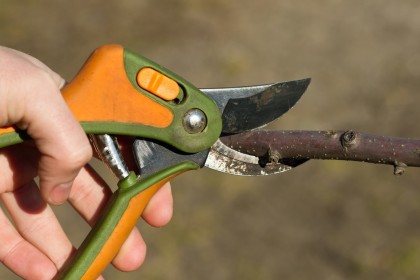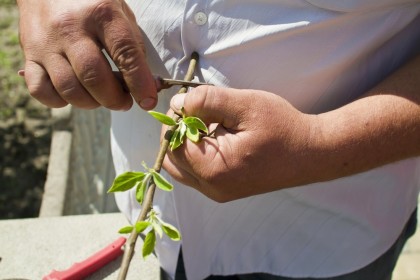Breathe New Life Into Old Or Injured Fruit Trees
An ironic fact about fruit trees is that the same variety of tree cannot reproduce from a seed it creates — this can only be done through grafting. Grafting is a technique not only used for reproduction of the original cultivated species, it is also applied to repair injured trees, as well as establish different fruit varieties on the same tree.
There are numerous benefits that can be gained through grafting including:
- Upgrading to a more productive cultivator
- Changing variety to a preferred alternative
- Merging of several different cultivators on the same tree for variety
- Upgraded cultivators grow faster than young trees, for quicker fruit production
It’s important to know when new growth (scions) are grafted to an established tree, these must be sealed with a grafting compound after being attached — both for protection and adhesion. Also, it’s best to graft in the spring with most grafting methods, when your fruit trees start budding.
To determine what method of grafting is applicable to you, we’ve outlined all of the different types below.
Whip Grafting (Splice or Tongue Grafting)

Whip grafting is one of the oldest grafting techniques, used for producing more variety from one cultivator, spreading of the harvesting season and growing identical fruit. This type of grafting is generally used on younger trees, such as apple and pear varieties, where the tree is around the same width as the new growth (scion) being attached. It is a good technique for beginners, as it’s quite simple.
Cleft Grafting

Cleft grafting is a technique used on older fruit trees and can be adapted to either the side branches of a larger tree, or the trunk of a smaller tree. It ensures better productivity or variety from trees that are no longer in their prime. The scions are inserted within 2 or 3 feet of the branches or trunk. This is not a good grafting method for trees that are very large.
Side Grafting

Side grafting is a preferred method of grafting for fruit trees that are not large enough for a cleft, or too large for the whip. It is a popular grafting method for older trees, for increased production and variety. The scion is inserted in the side of the established cultivator, which is traditionally larger in width than the scion.
Budding

Budding is the only grafting method that is undertaken in summer, and a single bud is grafted as the scion, as opposed to part of the stem. This is a popular grafting technique used in nurseries, especially for topworking apricot, peach, apple, plum and peach trees, when cleft or whip grafting is too difficult.
Bridge Grafting

Bridge Grafting is a technique employed for injured trees, where the bark has been gnawed away from the trunk by animals or damaged by natural causes. When this occurs it results in the tree eventually dying in the area where it’s been debarked (girdled), so grafting is a great method to save the tree.
A bridge graft enables a scion to be attached over the area that’s been girdled, so the tree can experience fresh growth, and continue to bear fruit.
Your local nursery or garden centre may also have lots of advice and supplies
Related articles that may be of interest include:




